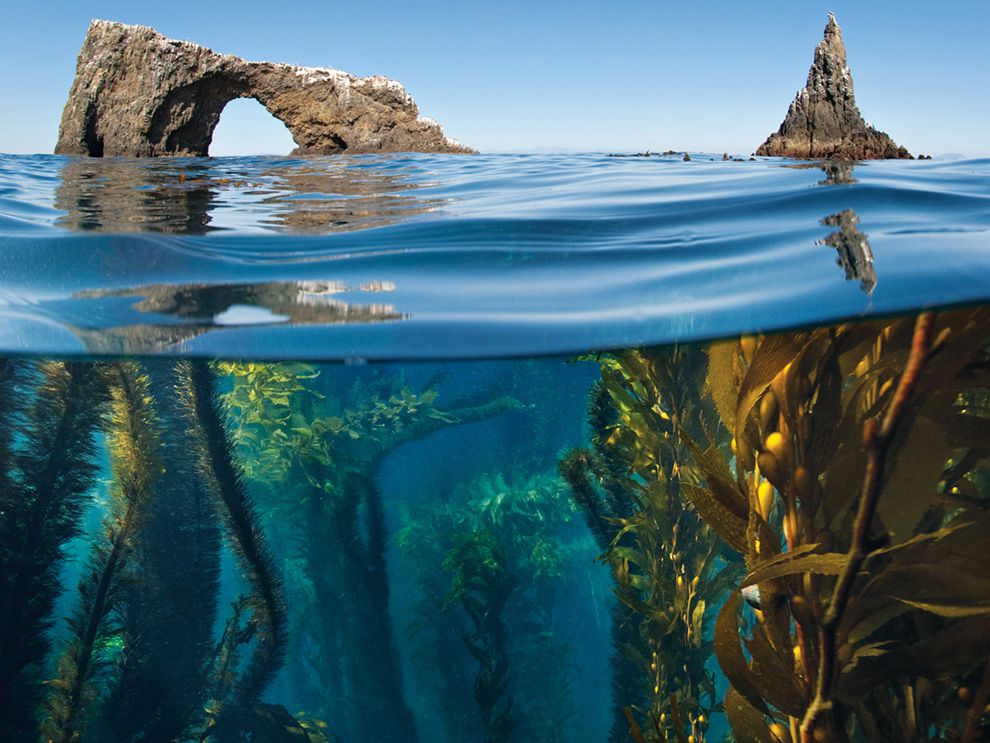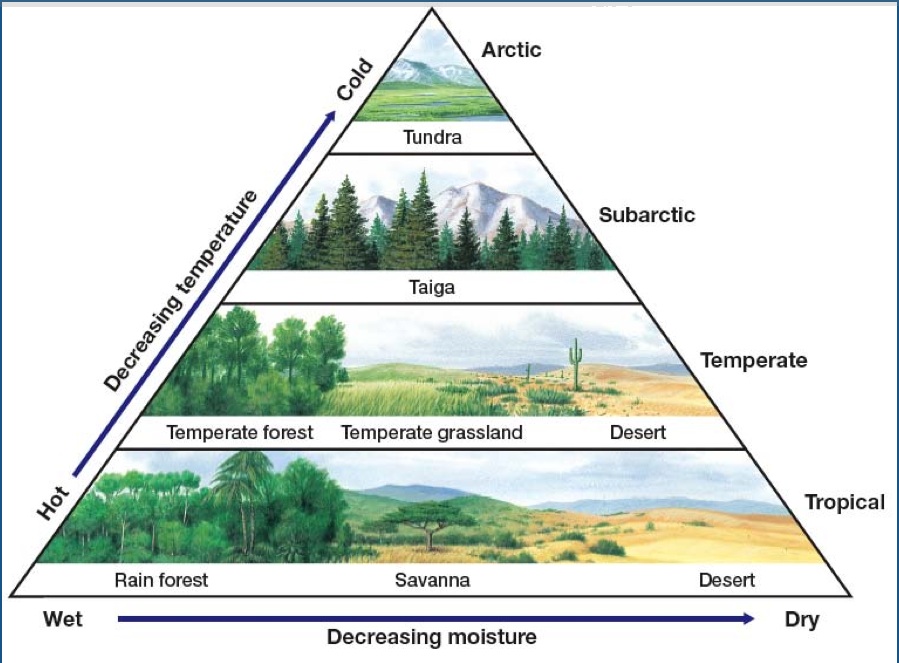ATAR Geography Units 3 & 4

Syllabus
Unit 3: Global Environmental Change
This unit focuses on the changing biophysical cover of the Earth's surface, the creation of anthropogenic biomes and the resulting impacts on either global climate or biodiversity. The Earth's surface is constantly changing and all environments are being modified by human activity.
This unit begins with an overview of land cover change drawn from different regions and countries. Two depth studies provide greater detail.
Depth Study 1: Interrelationship between land cover and either global climate change or biodiversity loss.
Depth Study 2: Evaluation of a local land cover change initiative designed to address either climate change or biodiversity loss.
Students develop skills in geographical inquiry, tools such as spatial technologies, and fieldwork.
In this guide, content taken directly from the syllabus is shown in purple.
Indigenous Land Management

Indigenous Australians systematically burnt grasslands to reduce fuel and stop fires raging out of control.
Indigenous Australians had and have a system of land management. It involved rather a patchwork of burnt and re-grown areas. Using fire Aboriginal people could plan and predict plant growth and with it attract animals for hunting. They converted the land to grasslands for the "maintenance" of animals, plants and fresh drinking water.
Population Growth

A public swimming pool in China.
In biology or human geography, population growth is the increase in the number of individuals in a population. Many of the world's countries have seen a sharp rise in population since the end of the Cold War. The fear is that high population numbers are putting further strain on natural resources. The birthrate is affected by economic status- see Income and fertility.
Sustainability

Sustainability is what occurs when environmental and economic actions taken by present persons do not diminish the opportunities of future persons to enjoy similar levels of wealth, utility, or welfare.
Land Cover Change

Hannans North Tourist Mine, Kalgoorlie WA
Land cover is the observed biophysical cover on the Earth's surface and includes trees, shrubs, grasses, soils, exposed rocks and water bodies, as well as anthropogenic elements such as plantations, crops and built environments.
There are two primary methods for capturing information on land cover: field survey and analysis of remotely sensed imagery.
Land cover changes for many reasons, including seasonal weather, severe weather events such as cyclones, floods and fires, and human activities such as mining, agriculture and urbanisation.
There are many different processes of land cover change, and they all have different impacts. Key processes of land cover change include deforestation, agriculture, rangeland modification, soil degradation, irrigation, land reclamation, and the growth of urban settlement and economic use of land.

There are a range of impacts of land cover change on local and regional environments. The table below provides some examples of impacts typical of changes to the Earth's surface.
| Example | Impact |
| Soil erosion and degradation | Soil erosion removes valuable top soil which is the most productive part of the soil profile for agricultural purposes. The loss of this top soil results in lower yields and higher production costs. |
| Loss of habitat and biodiversity | Human health ultimately depends upon ecosystem products and services (such as availability of fresh water, food and fuel sources) which are requisite for good human health and productive livelihoods. Biodiversity loss can have significant direct human health impacts if ecosystem services are no longer adequate. |
| Changes to the water cycle | Water cycle processes are highly dependent on temperature. When temperature conditions change, so does the water cycle. As air temperatures increase, more water evaporates into the air. Warmer air can hold more water vapour, which can lead to more intense rainstorms, causing major problems like extreme flooding in coastal communities around the world. |
| Urban heat islands | An urban heat island (UHI) is an urban area or metropolitan area that is significantly warmer than its surrounding rural areas due to human activities. Urban heat islands caused by cities have altered the natural selection process. As UHIs are characterised by increased temperature, they can potentially increase the magnitude and duration of heat waves within cities. |
Factors Affecting Land Cover Change
There are a range of differences between countries in terms of how they cause and manage land cover changes. Some influential factors include government policy, ideology and culture, type of economy, and the nation's wealth.
Consider the comparison between Australia and two other countries.
Australia
- Liberal democracy, developed economy
- Australia's democratic system means that there are often political contests over environmental policy, often between industry and pro-environment groups. Agriculture and mining are the most impactful, outside urban areas.
China
- Single party dictatorship, emerging economy
- China's economy has undergone massive expansion, with high rates of economic growth. This has consequences such as urbanization and deforestation.
Saudi Arabia
- Absolute monarchy, developing economy
- Saudi Arabia is the world's largest exporter of oil, and this reliance on fossil fuels and a history of poor environmental management has contributed to problems such as urbanization, deforestation, desertification and air pollution.
Biomes

A biome is an area of the planet that can be classified according to the plants and animals that live in it. Temperature, soil, and the amount of light and water help determine what life exists in a biome.

Anthropogenic biomes are created by sustained interactions between humans and ecosystems, including urban, village, cropland, and rangeland. Just as the classic biomes are formed by global patterns of climate, anthropogenic biomes are formed by global patterns in human populations and their use of land over the long-term.

Humans have dramatically altered global biodiversity and ecosystems.
It is no longer possible to explain or predict ecological processes without considering the role of humans affecting those processes. Human activity, indirectly (alteration of habitats) and directly is a major cause of extinctions, especially of megafauna such as elephants.
Climate Change
Climate change is a change in the pattern of weather, and related changes in oceans, land surfaces and ice sheets, occurring over time scales of decades or longer.
Ecosystems

An ecosystem consists of a community of organisms together with their physical environment. An ecosystem is made up of the biotic and abiotic. Biotic components are living things, such as trees and animals, and abiotic are non-living, such as the physical environment.
Biodiversity

Biodiversity is the variety of all life forms on earth - the different plants, animals and micro-organisms and the ecosystems of which they are a part.
Genetic diversity is the variety of genes within a species. Each species is made up of individuals that have their own particular genetic composition.
Species diversity is the variety of species within a habitat or a region. Some habitats, such as rainforests and coral reefs, have many species.
Ecosystem diversity is the variety of ecosystems in a given place. An ecosystem is a community of organisms and their physical environment interacting together.
Megadiversity describes countries with very high levels of biodiversity. Twelve of the megadiverse countries, including Australia, contain about 75% of Earth's total biodiversity.
Unit 3 Depth Studies
Depth Study One
Students investigate the links between changes in land cover and changes in either global climate or biodiversity.
Global climate change
- the spatial distribution of the world’s rainfall and temperature patterns
- the key elements of the following natural systems: heat budget (including the greenhouse effect), hydrological cycle, carbon cycle and atmospheric circulation, and the ways in which they interact to influence the Earth’s climate
- the causes (natural and anthropogenic) and rate of global climate change
- one major type of evidence for climate change through geological time
- one major type of evidence for climate change in recent human history
- the interrelationship between land cover change and climate, including changes to surface reflectivity (albedo) and the process of natural carbon sequestration
- the effects of climate change on land cover in natural and anthropogenic biomes (vegetation, ice sheets, glaciers, coastal systems and coral reefs, agriculture, urban settlements and industry)
- the projected impacts of global climate change
Depth Study One
Students investigate the links between changes in land cover and changes in either global climate or biodiversity.
Loss of biodiversity
- the spatial distribution of the world’s biomes
- the key elements of ecosystem structure and dynamics (biotic and abiotic elements, food chains and webs, biomass, trophic levels, flows of matter and energy)
- the causes (natural and anthropogenic) and rate of declining biodiversity
- one major type of evidence for loss of biodiversity through geological time
- one major type of evidence for loss of biodiversity in recent human history
- the interrelationships between land cover change and biodiversity loss, including shifting ecological boundaries, evolutionary diversification and species extinction
- the effects of biodiversity loss in natural and anthropogenic biomes on ecosystem services and species, ecosystem and genetic diversity; loss of human foods and medicinal plants
- the projected impacts of loss of biodiversity
Depth Study Two
Using fieldwork and/or secondary sources, students investigate how the impacts of land cover change are being addressed and evaluated.
- approaches to land cover restoration and rehabilitation, and the mitigation of future land cover changes, including preservation strategies
- the current and proposed strategies, at local to global levels, implemented to mitigate the adverse effects of either global climate change or loss of biodiversity
- how human activity has adapted, or may be required to adapt, to either global climate change or loss of biodiversity
- a program designed to address the impacts of land cover change on local and regional environments
- an evaluation of the program, giving consideration to environmental, economic and social benefit and costs
- an evaluation of at least one alternative approach to the management of land cover change in the area being studied, using the concept of sustainability to determine the extent to which the approach has the potential to address the issue into the future